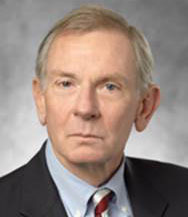When Will They Ever Learn: Attorneys Continue To Misuse Generative AI

The use of generative AI has not only introduced efficiencies in the practice of law, but also major risks. Much has been written about these benefits and risks; the American Bar Association and the State Bar of California have provided major guidance to attorneys to avoid those risks; and courts impose sanctions when those risks are realized, yet attorneys continue to use generative AI in preparing briefs with resulting blatantly incorrect statements of the law. This article is intended to provide both a reminder of the ethical risks when generative AI is misused but also the ill- consequences which may befall attorneys who misuse generative AI.
In 2023 New York attorney Stephen Schwartz gained notoriety due to his use of generative AI for legal research for a motion to dismiss a case in the Southern District of New York. Mr. Schwartz did not use AI to actually write the motion. However, he used AI for the legal research used in the motion. Chat GPT provided Mr. Schwartz with the authority he needed for the motion. Unbeknownst to Mr. Schwartz, the AI fabricated at least six cases, complete with quotations. It also cited several other real cases with fictitious holdings and/or quotations. The AI cloaked these cites with authentic looking case captions, court names, docket numbers, and the names of the judges and lawyers. When challenged on the cites, the AI confirmed each case was real and provided what it said was a “brief excerpt” from each case. It also asserted that these cases can be found on Westlaw and Lexis. Mr. Schwartz submitted the brief; opposing counsel performed cite checks and found that the cases did not exist; and the court took appropriate action against Mr. Schwartz.
Mr. Schwartz’s missteps found their way into national publications. Amazingly, despite this publicity, attorneys continue to misuse generative AI, carelessly failing to check citations. One recent example was the use by plaintiff’s counsel, Brandon Monk, who submitted a brief to the United States District Court for the Eastern District of Texas in Gauthier v. Goodyear Tire & Rubber Co., No. 1:23-CV-281 (E.D. Tex. Nov. 25, 2024). Monk explained that he used generative AI to produce the pleading which contained two nonexistent case citations. The court determined that within the meaning of Federal Rule of Civil Procedure 11, counsel had breached his duty to exercise candor, diligence, and show the utmost respect to the judiciary by failing to review and verify any computer-generated content to ensure that it complies with all standards. The court thereupon sanctioned Mr. Monk $2000.
Relevant to California attorneys, the California State Bar has done three things to impose upon California attorneys the ethical duty to ensure that any use of generative AI does not result in fantasy citations.
First, the Bar’s Board of Trustees adopted on November 16, 2023 the “Practical Guidance For The Use of Generative Artificial Intelligence In The Practice of Law” which contains guidance for attorneys for using Generative AI in a manner consistent with the rules of professional conduct and the Business and Professions Code sections which regulate attorneys. Notably, the Guidance is couched in such language as attorneys “must not”; “should”; “must ensure”; and other such directive terms. The Guidance admonishes that “it is possible that generative AI outputs could include information that is false, inaccurate, or biased. A lawyer must ensure competent use of the technology, including the associated benefits and risks, and apply diligence and prudence with respect to facts and law.” It continues that “before using generative AI, a lawyer should understand to a reasonable degree how the technology works, its limitations, any applicable terms of use and the policies governing the use and exploitation of client data by the product.” Further, “overreliance on AI tools is inconsistent with the active practice of law and application of trained judgment by the lawyer.” The Guidance continues in its iteration of the expansive duty of care of attorneys and supervising attorneys in ensuring the proper use of generative AI.
Second, Rule of Professional Conduct 1.1, entitled “Competence”, directs that “(a) a lawyer shall not intentionally, recklessly, with gross negligence, or repeatedly fail to perform legal services with competence.” The Comments to Rule 1.1 were recently amended to declare that “[1] The duty set forth in this rule includes the duty to keep abreast of the changes in the law and its practice, including the benefits and risks associated with relevant technology.”
Third, the State Bar to ensure the technological competence of lawyers adopted State Bar Rule 2.72 (C)(2)(a)(iv) which requires that “beginning with the compliance period ending January 31, 2025, all licensees shall have “at least one hour of education addressing technology in the practice of law….”
The American Bar Association Formal Opinion 512 dated July 29, 2024, although not binding in California, may be looked to in determining the ethical duties of California lawyers. It is entitled “Generative Artificial Intelligence Tools.” Its purpose is “to ensure clients are protected, lawyers using generative artificial intelligence tools must fully consider their applicable ethical obligations, including their duties to provide competent legal representation, to protect client information, to communicate with clients, to supervise their employees and agents, to advance only meritorious claims and contentions, to ensure candor to the tribunal, and to ensure reasonable fees.”
Returning to Mr. Monk and his misuse of generative AI, the imposition of a $2000 sanction upon him would have required him to report the sanction to the California State Bar had he been licensed in California. The characterization of Mr. Monk’s misuse by District Court Judge Marcia A. Crone as being the failure of counsel to exercise candor, diligence, and the utmost respect to the judiciary should be taken as a warning by all counsel that the misuse of generative AI will not be tolerated by the judiciary and transgresses their ethical duties.